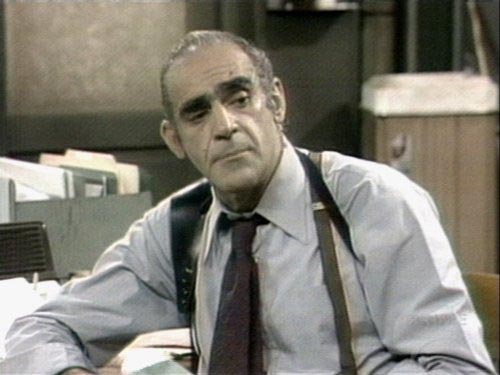Just in case you were wondering, there are a few things going on in the Indiana General Assembly that have nothing to do with HJR 3, the Resolution formerly known as HJR 6. Here, in no particular order, are some goings on under the dome.
**********
Bill: HB 1141
Boring Name: Methamphetamine Lab Disclosures in Property Sales House List.
Fun Name: Meth House. (♪It’s a meth . . . house. It’s mighty-mighty. Just letting it all hang out.♪)
Summary: If any house is used for meth-manufacturing purposes, it would go on a list maintained by the state police. It comes off the list 90 days after it is declared clean. The law also requires homeowners to disclose if a property has been used to manufacture meth.
What’s good: Presumably nobody wants to buy a house that has undiscovered anhydrous ammonia in the spare bedroom closet just waiting for a chance freeze your appendages off.
What’s not-so-good: It seems duplicative or unnecessary. The State already licenses home inspectors. Couldn’t consumers start to demand that a meth-house check be part of an adequate home inspection? Couldn’t banks that finance home purchases demand that title searches–which already search for judgments in various databases–also inquire with law enforcement about any manufacturing history? Of course. If the market already demands something, and there are no legal prohibitions to providing it, the market tends to get what it wants. This well-intentioned bill will create another special inspector. And in a housing market that needs to decrease transaction costs, this will have the opposite effect–making it more difficult to buy and sell houses, particularly in rural and poor urban neighborhoods. Even property with zero contamination will not be sold until someone has paid the costs of an inspection.
**********
 Bill: HB 1174
Bill: HB 1174
Boring Name: Taxation of Electronic Cigarettes
Fun Name: If it Quacks Like a Duck, Tax it Like a Duck.
Summary: Vapor-producing machines, commonly called “electronic cigarettes” would be taxed just like cigarettes.
What’s good: This is the closest Indiana has come since it’s controversial state-wide smoking ban to showing respect for smokers, of sorts, in that it promises to tax them at the same level once they become former smokers. Ah, parity.
What’s not-so-good: Whatever one’s reaction to the word “tax,” taxing goods to raise revenue is at least logical. Taxing behavior to offset the state’s costs of cleaning up after that behavior is also logical. This tax is neither. About 2.5 million people in the entire country use e-cigarettes, and even assuming Indiana’s trends are equal to the entire country, that’s just over 50,000 people in Indiana using vapor machines. So a few bucks a month from a population roughly the size of Elkhart Indiana is hardly a budget-saving measure. Nor can the state be jumping in to protect consumers from health dangers of water vapor, unless dumber-than-dirt teens are putting their faces over boiling pans of water hoping to “ride the vape” high. On second thought, give it time. That’ll probably happen.
Instead, this measure seems designed to keep the perceived competitor (e-cigs) from having a significant cost advantage over conventional cigarettes because its customers would otherwise not have to pay taxes. Vapor pens are what economists call “substitute goods” which are a natural part of how markets respond to innovation. Vapor doesn’t have the lung cancer-causing impact of cigarettes because–wait for it–they aren’t cigarettes. They don’t contain tobacco. Come on, why should a little thing like not actually being cigarettes stop them from being taxed like cigarettes? Right. That’s a bit like taxing bicycles like cars just because someone might choose to ride a bike to work instead of driving. Nevermind that bicycles don’t cause potholes, and don’t pollute. They commit a greater sin. They compete.
On July 1, 2012, when Indiana relegated smoking to private homes, clubs, outdoors (sometimes) and at least 8 feet from every door in the state, we were told that public health was paramount. Apparently, that concern does not extend to the state’s tax policy, as taxing vapor machines will create a completely artificial disincentive to those trying to kick the habit. Dear Hoosier Health Crusaders: You’ll have to speak louder. I can’t hear you over these these crickets.
**********
Bill: HB 1351
Boring Name: Welfare matters; drug testing.
Fun Name: Keep a stash, get no cash.
Summary: Some TANF recipients would be required to undergo drug testing. Those who fail the tests could risk losing benefits if they refuse to seek treatment for addictions. Those supporting the law believe it will weed out (pun intended) drug users from the deserving welfare recipients. Opponents claim that the costs will exceed the savings achieved.
What’s good: Someone is still willing to put it in writing that using drugs is bad. And paying people to use drugs is idiocy.
What’s not-so good: While I’m not sure the “this experiment has failed in other states” criticism takes the deterrent effect into account, it is not hard to imagine that the costs of drug testing would exceed the benefits that can be measured. Instead of creating a new program, we should find a way to use metrics already known and inexpensively gathered, like drug convictions, serving as a basis to limit or monitor benefits.
UPDATE: As if reading my mind, I noticed today that the bill has been amended to include only those with drug convictions within the prior 10 years. Probably to lower costs.
**********
Bill: SB 101
Boring Name: Agriculture Operations and Criminal Trespass
Fun Name: Ag Gag
Summary: Undercover videotaping of farm activities would be a crime. Recent changes limit the crime to situations in which a trespasser causes property damage.
What’s good: Protection of private property, though last year’s version had more teeth.
What’s not-so-good: The limitation of the crime to incidents that have caused property damage seems to effectively gut this bill. It’s already a crime to cause property damage. And it’s already a crime to trespass. Surely creating a new category of crime by doing them both at the same time is a not a net benefit.
**********
Bill: HB 1143
Boring Name: Environmental Rules and Standards
Fun Name: The IDEM Leash
Summary: Prohibits the Indiana Department of Environmental Management from adopting any rule or standard that is more stringent what its federal equivalent.
What’s good: Consistency. While Indiana can’t prevent the feds from doing anything, it can give businesses and individuals some predictability in knowing that IDEM’s rules won’t be more restrictive than their federal counterparts.
What’s not-so-good: If this becomes law, expect significant litigation. Interest groups will parse the shades of meaning in the ample volumes of federal environmental regulation to fight over what is or is not more restrictive than the fed’s version.









